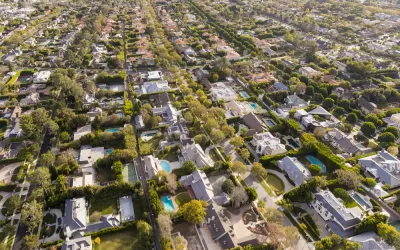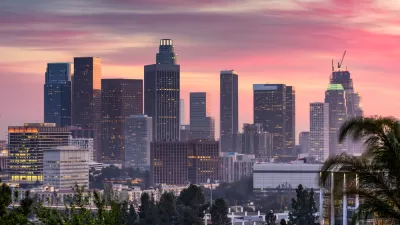Los Angeles is the latest city to adopt a "linkage fee" that charges new development to generate funding for affordable housing, joining cities like Seattle, Chicago, and San Jose.

"The Los Angeles City Council voted Wednesday to impose a new fee on development to raise millions of dollars a year for affordable housing as the city copes with rising rents and surging homelessness," reports Dakota Smith.
"Under the measure, builders will pay $1 to $15 a square foot, depending on the type of project and area, with higher fees in 'high-market' neighborhoods, including the Westside, and lower fees in areas that include San Pedro and South L.A.," according to Smith. Policy makers hope the new fee will generate $100 million every year after it goes into affect in 2019. More detail on how the fee works is included in the article.
The proposed "linkage fee" has been a subject of political debate for several years in Los Angeles, but the vote now comes as a victory for Mayor Eric Garcetti. The mayor has advocated for the linkage fee as a new permanent source of revenue for affordable housing projects.
Mayor Garcetti's comments after the approval of the new linkage fee seems to play two sides of the development politics debate: those in favor of growth and those concerned about gentrification as a result of new development. "Today we see hope in the promise that Los Angeles can continue to grow and indeed must grow….That when we see luxury condominiums going up, that we can make sure that there is money paid in to build housing for the rest of us," said Mayor Garcetti, as quoted in the article.
The new fee is unpopular with developers in the city, who say the new expense will most likely be passed down to renters. Others have argued that more fees are likely to slow or halt development altogether, making the fee ineffective for its own purposes.
FULL STORY: L.A. City Council approves development fee to raise money for affordable housing

Planetizen Federal Action Tracker
A weekly monitor of how Trump’s orders and actions are impacting planners and planning in America.

Congressman Proposes Bill to Rename DC Metro “Trump Train”
The Make Autorail Great Again Act would withhold federal funding to the system until the Washington Metropolitan Area Transit Authority (WMATA), rebrands as the Washington Metropolitan Authority for Greater Access (WMAGA).

The Simple Legislative Tool Transforming Vacant Downtowns
In California, Michigan and Georgia, an easy win is bringing dollars — and delight — back to city centers.

The States Losing Rural Delivery Rooms at an Alarming Pace
In some states, as few as 9% of rural hospitals still deliver babies. As a result, rising pre-term births, no adequate pre-term care and harrowing close calls are a growing reality.

The Small South Asian Republic Going all in on EVs
Thanks to one simple policy change less than five years ago, 65% of new cars in this Himalayan country are now electric.

DC Backpedals on Bike Lane Protection, Swaps Barriers for Paint
Citing aesthetic concerns, the city is removing the concrete barriers and flexposts that once separated Arizona Avenue cyclists from motor vehicles.
Urban Design for Planners 1: Software Tools
This six-course series explores essential urban design concepts using open source software and equips planners with the tools they need to participate fully in the urban design process.
Planning for Universal Design
Learn the tools for implementing Universal Design in planning regulations.
Smith Gee Studio
City of Charlotte
City of Camden Redevelopment Agency
City of Astoria
Transportation Research & Education Center (TREC) at Portland State University
US High Speed Rail Association
City of Camden Redevelopment Agency
Municipality of Princeton (NJ)




























